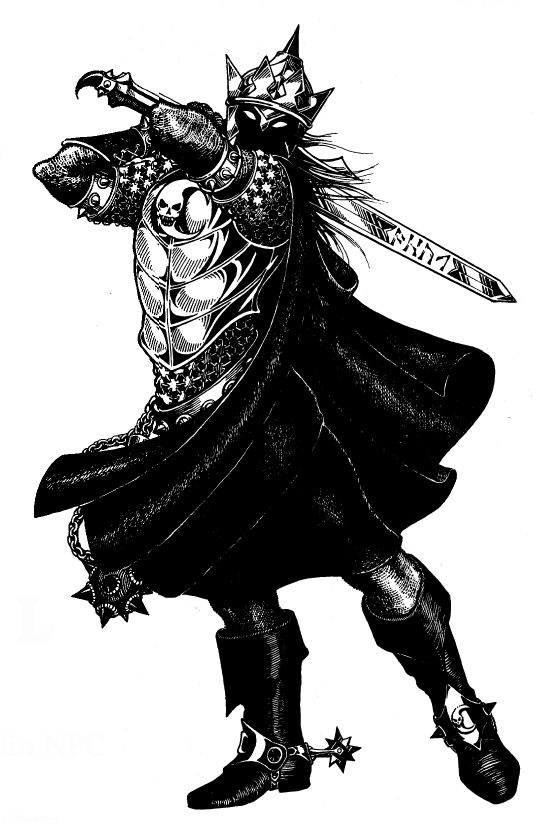A Plurisy? of Paladins
Chris Wood did the article. We tore off that brown paper wrapper and beheld issue #106's gorgeous cover art by Keith Parkinson. The very next thing we saw was the top right teaser: “Seven new ‘paladins’”.
Wuuuuuuut?!
We devoured the article because it was about something we all loved and had speculated deeply about as game masters ever since George Laking and Tim Mesford’s infamous article in The Dragon #39. Some of us had already taken stabs at new flavors of paladin, but Chris’ work was certainly compelling and had the feel of authority. It was well organized, thorough and well-intentioned. I appreciated that each class was relatively brief; of similar length to classes found in the PHB, and less like the swollen atrocities that sprawled across page after page of Unearthed Arcana, disgorging skill after skill onto my stupefied face.
And yet, for me (and others I’ve spoken too) the ‘paladins’ in issue #106 were…not quite.
I think in some cases they are simultaneously overpowered and unjustly punished, like in the case of the Lyan who, yes, is a spell-casting war tank, but whose xp chart eclipses even the Barbarian. You need an additional 100,000 xp to reach seventh level Lyan over and above what you need to reach seventh level Barbarian. You don’t really grasp that when you first roll up the Lyan character—that your pals will quickly out-level you and leave you in the dust.
To be fair, the editorial introduction warns us, “Use of these classes as player characters is not recommended, as they have not been play-tested for balance and tend to duplicate powers from existing classes.”
Fair enough. But we all know that NPC-only classes are a myth. We all want to play them at least once.
To that end, I’m following (once again) in the footsteps of trailblazers that did excellent work. But what then am I “fixing”?
In my opinion, there was a problem with the “feel” of several of the paladins. Some were jacks (and ostensibly masters) of all trades. Some felt too specifically attuned to a flavor. For example, why is the Neutral Good Myrikhan so connected with the forest? There are many Neutral Good deities out there whose spheres of influence are unrelated to forests and woodlands.
This leads to my opinion that the paladin, regardless of alignment, must still be the knight of the palace in some key way...or at least a knight of some variety. The divinely empowered warrior, the fiery brand, or even the armorless and wandering ronin. The paladin should remain a powerhouse because of his or her strictures and personal sacrifice. And the power given to the paladin should, in my opinion, be primarily centered on combat [or] defense of the church.
So my goal here is not to say that Chris Wood got it wrong. Rather, I think he laid the foundation for engaging with the daunting task of tackling the topic. Through Chris’ article we see how ALL the paladins fit in a nice tight article, that the work is NOT insurmountable, and that there are excellent ideas here for generating new strains of holy warriors.
To wit…
>>> A Plurisy of Paladins (free PDF)
I hope you enjoy these classes and that they give you some ideas for interesting NPCs or player characters. If you feel like supporting me, check out my digital products on Gdigital bundles umroad [or] physical books at Lulu.
peace,
and happy gaming

